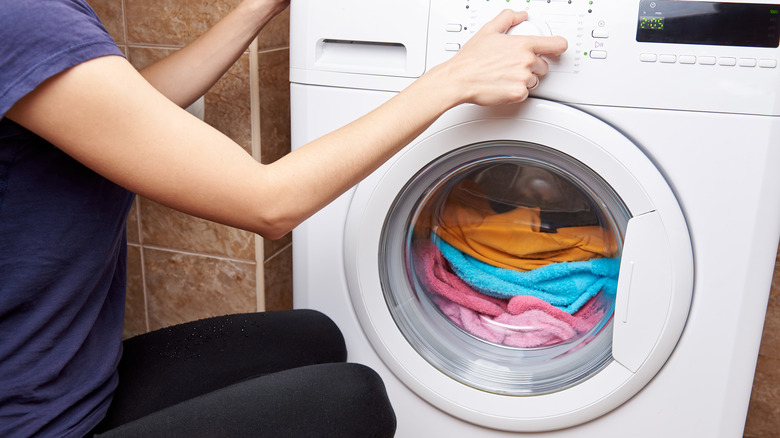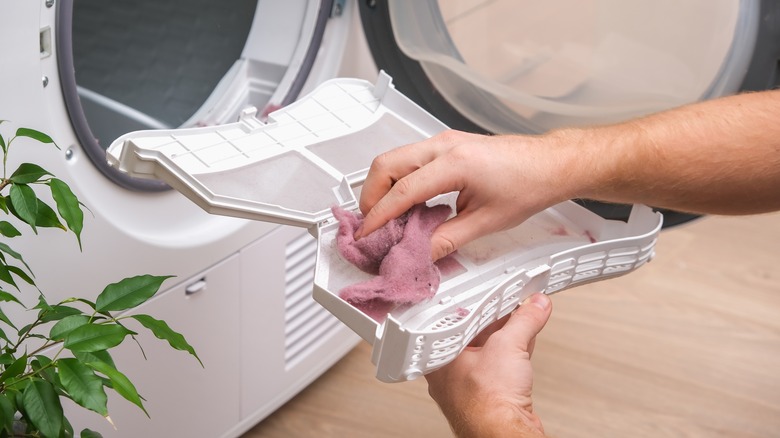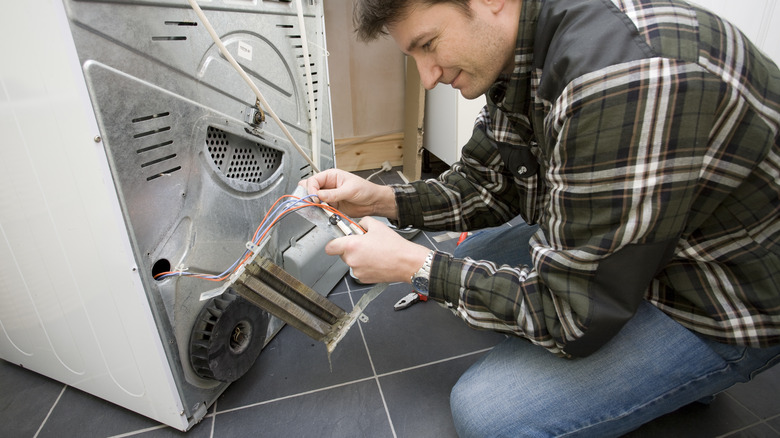Here's What It Means When Your Dryer Feels Hot To The Touch
When you are doing laundry, you expect your clothes dryer to heat up as it dries the clothing. However, if the appliance is feeling hot to the touch or is overheating regularly, you could have a far more serious problem. These could include blocked air vents, a malfunctioning heating element, or a failing thermostat — which can result in a fire. Some problems that can cause excess heat, such as a loose seal in the drum or a dryer that is too close to the wall, also need alleviating, often with the help of a repair professional. However, they don't necessarily increase the risk of an immediate fire.
According to a report from the National Fire Prevention Association, clothes dryers and washing machines cause almost 16,000 annual fires in the United States. You certainly don't want to ignore a potential problem that could lead to a fire.
There's a difference between a dryer feeling warm and being excessively overheated, though. If it just feels warm after running a load of clothes, it's probably not worrisome. However, if the exterior of the unit is so hot that you cannot touch it or can barely touch it, this is a sign that should concern you. Additionally, if the machine feels warmer than normal while running a cycle or afterward, you should check for problems.
Most common reason dryers overheat
When your clothes dryer is running hotter than it should, the most common issue is that its vents are clogged and not working properly. A span of 10 to 13 years is the average length of time a dryer should last. However, if the unit constantly runs hotter than it should because of venting that doesn't work correctly, you could shorten the lifespan of the appliance.
As the dryer operates, it pulls lint and other tiny particles from the clothing. Such items either end up in a trap or may go through the venting system for the unit. An excessive amount of lint is the most common cause of fires when doing laundry. Lint not only provides potential fuel when a fire starts, but it also blocks the movement of air that the clothes dryer needs to be able to cool itself during operation. Successfully cleaning lint from your dryer should be done regularly.
Always unplug the machine before you do any work on it. Look for the lint trap, which often is near the inside of the door, and remove it. Pull the particles away until the mesh screen is clear. Then put it back in place. Three other areas that can accumulate lint are the vent hose that comes out of the back, any vent grills on the back, and the grill where the vent hose reaches the outside of your home. Use a vacuum cleaner hose to clean these areas.
Less common reasons your dryer is overheating
If your lint traps, hoses, and vents appear to be free from particles, you may have another problem causing the overheating. Make sure the dryer is far enough from the wall, so the vents can move air. Otherwise, unless you have experience repairing appliances, it may be difficult for you to diagnose the problem accurately and perform the repairs yourself. You may want to call in a repair professional for help if you're unsure about the exact problem.
A malfunctioning heating element can cause the dryer to become too hot to touch safely. The heating element is a metal conductor that generates heat when electricity runs through it. When this part is beginning to reach the end of its lifespan, it may create excessive heat. This can increase the danger of a fire if you have too much lint in the machine. Because the heating element is near the end of its lifespan when this is occurring, it's necessary to replace it.
Another potential problem may occur with the clothes dryer's thermostat. This part tells the heating element and other parts of the dryer when to operate to generate the desired temperature, just like the thermostat attached to your home's furnace and air conditioner. When the thermostat in the dryer begins to malfunction, though, it cannot regulate the temperature properly, causing excessive temperature swings. Replacing it can fix an overheating issue with the appliance, giving you a properly functioning machine again.


